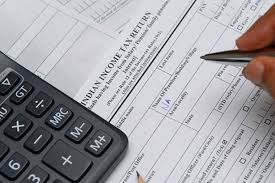An updated return can be filed at any time within 24 months from the end of the relevant assessment year.
Updated Return: The Finance Act 2022, had inserted subsection (8A) in section 139 of the Income Tax Act to enable the filing of an updated return. In 2022, the union government proposed to permit taxpayers to file an updated return on payment of additional tax within two years from the end of the relevant assessment year.
Why did the government add an updated return provision?
The provision was announced by Union finance and corporate affairs Minister Nirmala Sitharaman while presenting the union Budget for the financial year 2022-23.
FM Sitharaman had said this would give taxpayers an opportunity to correct any omissions or mistakes in correctly estimating their income for tax payment.
She then pointed out that if the IT department finds out that some income has been missed out by the assessee, it goes through a lengthy process of adjudication, the new proposal would repose trust in the taxpayer.
She had said “It is an affirmative step in the direction of voluntary tax compliance.”
Read More: How is residential status determined for taxation by Income Tax Department in India?
Updated ITR: Features
- Provision to file an Updated Return on payment of additional tax.
- Enable the assessee to declare income missed out earlier.
- Can be filed within two years from the end of the relevant assessment year.
Who Can File An Updated ITR?
As per the information provided by Income Tax India on its website, the section provides that an updated return can be filed by any person irrespective of the fact whether such person has already filed the original, belated or revised return for the relevant assessment year or not.
An updated return can be filed at any time within 24 months from the end of the relevant assessment year. However, there are different situations where an updated return cannot be filed.
For example, an updated return cannot be filed if such updated return is a return of a loss.
Also, one cannot file an updated return if such updated return results in lower tax liability determined on the basis of original, revised or belated return filed by assessee.
Another instance where an updated return is not allowed, when such updated return results in or increases the refund due on the basis of original, revised or belated return filed by assessee.
Read More: ITR filers can get Tax Demand Notice. Know how to reply on the e-filing portal for AY 2023-24
To file an updated ITR, you need to:
- File the form online or offline.
- Offline: Download the ITR-U form from the Income Tax Department website.
- Fill in the form carefully, making sure to correct all the errors or omissions.
- Attach the relevant documents, such as proof of income, deductions, and exemptions.
- Pay any outstanding taxes.
- If you are filing the form online, you can do so through the e-filing website of the Income Tax Department. Once you are logged in, you can select the ITR-U form and start filing it.
If you are unsure whether you need to file an updated ITR, you can always consult with a tax advisor.





































